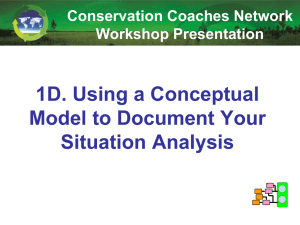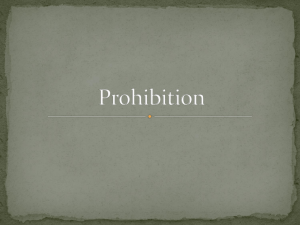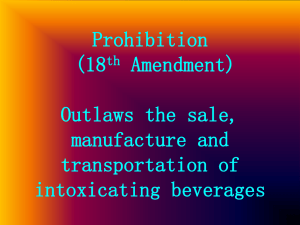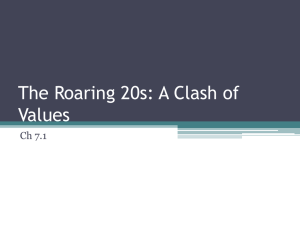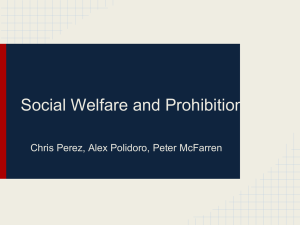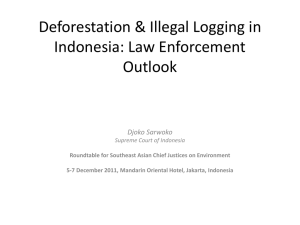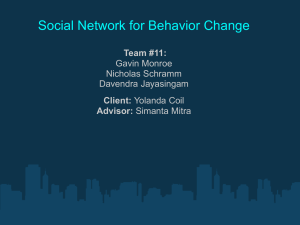The Effectiveness and Costs of Mahogany Prohibition
advertisement
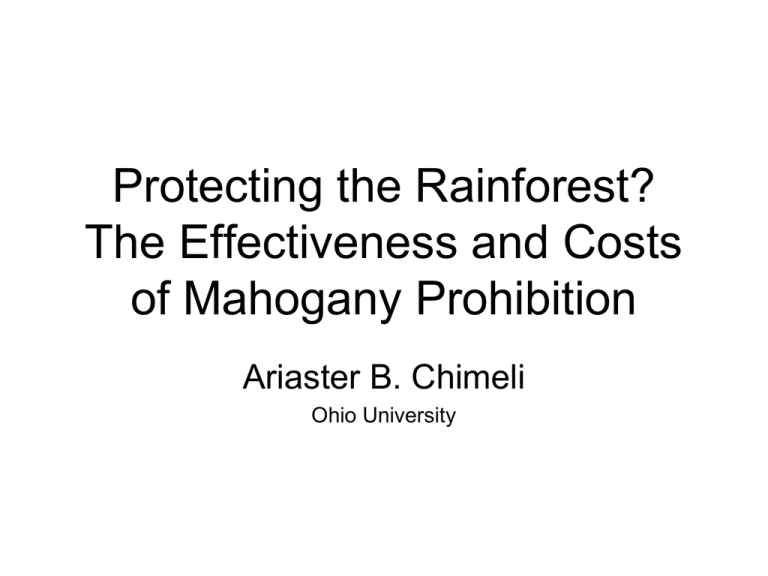
Protecting the Rainforest? The Effectiveness and Costs of Mahogany Prohibition Ariaster B. Chimeli Ohio University Prohibition and Supply Standard Presumption • Prohibition raises production costs. – “Imprisonment and other punishments”. • Supply decreases. • Equilibrium price increases. • Equilibrium quantity decreases. Prohibition and Supply Standard Presumption Becker, Murphy and Grossman, JPE, V. 114(1), 2006, p. 42. Big Leaf Mahogany • Highly valued timber in high end markets. • Endangered species? • Secondary deforestation. Timeline for Brazilian Mahogany Regulation Export Quota 150,000m3 Early 1990s 2 year moratorium new mgt. plans (renewed 98, 00) 1995 Jul-96 IBAMA reviews mgt. plans Mahogany In CITES III EQ 65,000m3 1997 Mahogany in CITES II (rejected) 1998 Mar-99 Fed. Gov. working group on mahogany meets Jun-99 IBAMA report 85% mgt. plans suspended Oct-01 Prohibition maintained Apr-02 EQ 30,000m3 Mahogany prohibition Nov-02 CITES II regulation enters into force Nov-03 Mahogany In CITES II Brazilian Big Leaf Mahogany Prices and Quantities Chimeli and Boyd (2010) Figure 2: Brazilian Exports of Mahogany Figure 4: Brazilian Exports of Other Tropical Species Combined series: EU P and Q Combined series: US P and Q Violence Chimeli and Soares I Illegal Markets and Violence • This paper: – Unique data: natural experiment involving a complete shut-down of a market – Not a “vice” good (mahogany). Empirical Strategy • Present evidence that mahogany trade persisted after prohibition as “other species” (structural breaks). • Document (Diff-in-Diff) relative increase in homicide rates after prohibition at the municipal level. Area of Natural Occurrence of Mahogany in the Brazilian Territory, according to Grogan et al (2002) Figure 2: Evolution of Homicide Rates (per 100,000) in the State of Pará, Brazil, 1995-2007 Violence in Mahogany Municipalities • Over 1,900 additional homicides (estimated) between 1995 to 2007 attributed to illegal mahogany activity. • Typical victims are those opposing illegal logging. – Members of indigenous tribes (logging in their land). – Landless peasants. – Environmental activists. – Small farmers. Five remaining members of the Akuntsu People. Rondônia, Brazil Deforestation Chimeli and Soares II Logging Industry and Tropical Deforestation in the World • “Indirect role of timber production in opening up inaccessible forest areas, which then encourages other economic uses of forest resources, such as agricultural cultivation, that lead to deforestation on a wider scale.” Barbier et al. (1995), p. 412. • Argument applied to: – Brazil, Indonesia, Cameroon and ‘major tropical countries’ (Amelung and Diehl, 1992; Barbier et al., 1995). – Thailand (Cropper et al., 1999). Mahogany and Deforestation in the Brazilian Amazon “Moreover, mahogany logging indirectly contributes to regional deforestation. Logging companies have opened up some 3000 km of logging roads in southern Pará and mahogany logging has been documented in each of the region's 15 Indian Reserves. After logging, there is a growing trend to convert forests to cattle pasture, in part perhaps, because the prospects for future mahogany harvests do not appear to be good.” (Verissimo et al., 1995, p. 60). Empirical Strategy • Diff-in-Diff: forested area in mahogany vs. non-mahogany municipalities • Dependent variables: – Forest/area (2000 – 2010) – Bovine density (1974– 2007) • Treatment variables: – Mahogany prohibition (contemporaneous and lagged) – Areas where mahogany naturally occurs – Mahogany exports (weights at the state level) Results Table 2: Illegality of mahogany trade and deforestation, municipalities in mahogany occurring states, 2000 - 2010 Difference-in-differences Sample Dependent Variable:Forest Cover/Municipality Area Treatment 2002 (L1) Mahogany Occurring States Pará Mahogany Area x Treatment Year Mahogany Area x Treatment Year Mahogany Area x Treatment Year Mahogany Area x Treatment Year (1) (2) (3) (4) -0.0295*** [0.00576] Treatment 2002 (L2) -0.0371*** [0.0109] Constant 0.213 [0.161] -0.0314*** [0.00681] 0.368** [0.166] Observations R-squared 4,242 0.993 4,242 0.993 0.336*** [0.0223] -0.0370*** [0.0113] 0.336*** [0.0217] 1,024 0.985 1,024 0.985 Robust standard errors in brackets, clustering at municipality level. *** p<0.01, ** p<0.05, * p<0.1. All regressions include a constant, municipality and year dummies, and are weighted by population. Results Table 4: Illegality of mahogany trade and bovine density, 1992 - 2007, Difference-in-differences. Sample Dependent Variable: Bovine heads/municipality area All States Treatment 2002 (L1) (2) (3) (4) (5) 8.046*** 4.921*** 3.537* [1.424] [1.524] [2.012] 17.19*** 13.10*** 13.21*** [2.070] [2.196] [3.176] Treatment 1999-2001 (L2) Treatment 2002 (L2) Constant Pará Mahogany Area Mahogany Area Mahogany Area Mahogany Area Mahogany Area Mahogany Area x Treatment x Treatment x Treatment x Treatment x Treatment x Treatment Year Year Year Year Year Year (1) Treatment 1999-2001 (L1) Mahogany Occurring States (6) 8.907*** 5.604*** 4.047** [1.319] [1.346] [1.630] 18.11*** 12.55*** 14.37*** [2.276] [2.341] [3.527] 25.23** 16.01 74.59** 25.91 6.994*** 6.588*** [12.39] [13.84] [30.52] [30.15] [1.947] [2.068] Observations 49,377 44,427 6,253 5,628 1,525 1,398 R-squared 0.944 0.958 0.924 0.943 0.893 0.902 Robust standard errors in brackets, clustering at municipality level. *** p<0.01, ** p<0.05, * p<0.1. All regressions include a constant, municipality and year dummies, and are weighted by population. Results • Policy evaluation: prohibition seemed to have increased mahogany extraction and deforestation in the Brazilian Amazon. – Decrease in forest cover in mahogany munic. – Increase in cattle following prohibition. • Evidence in support of the hypothesis that logging of high-value timber species is a driving force of larger scale deforestation.
